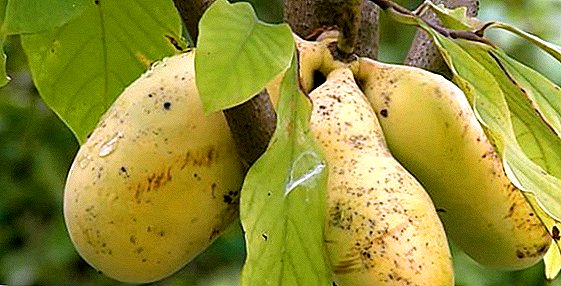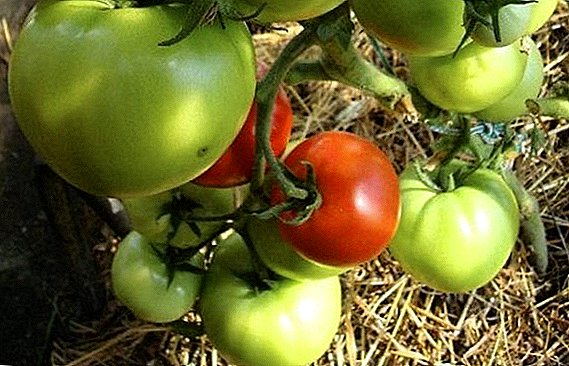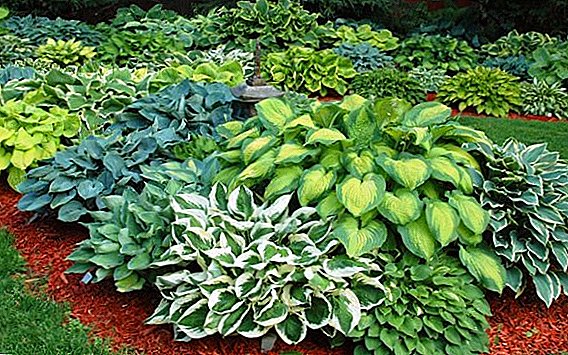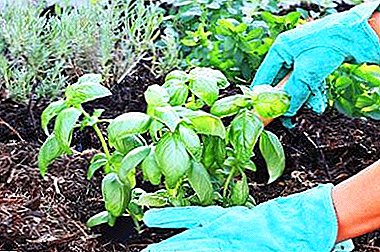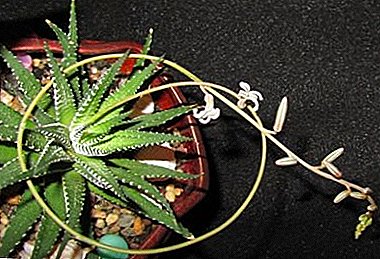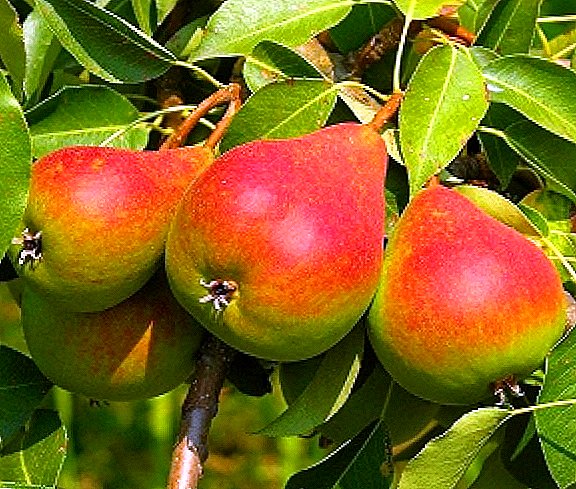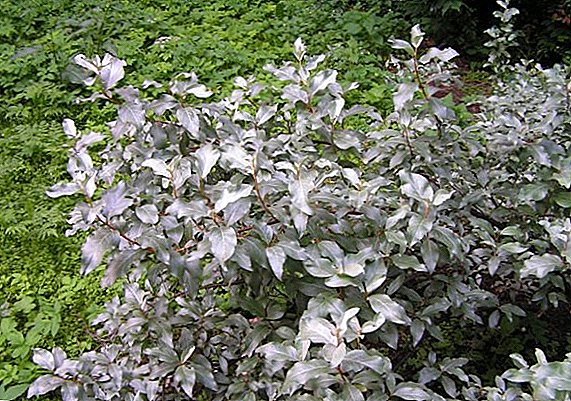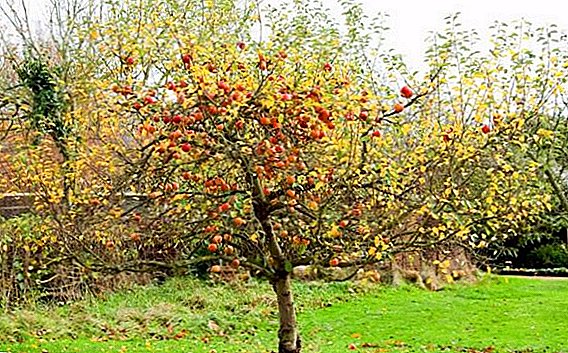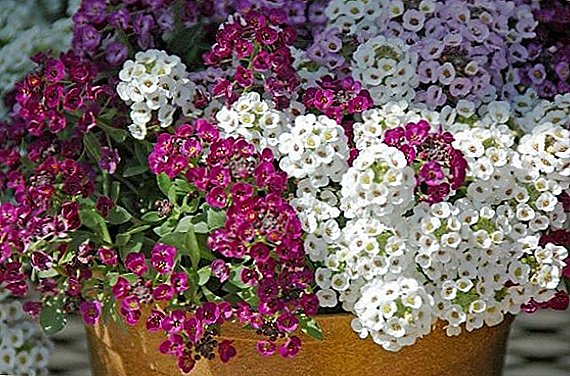 It will be a question of an ornamental plant - an alissume. We will answer the question of how to sow an alissum on seedlings and how to care for it. In this article you will find not only the necessary information, but also interesting facts about the plant.
It will be a question of an ornamental plant - an alissume. We will answer the question of how to sow an alissum on seedlings and how to care for it. In this article you will find not only the necessary information, but also interesting facts about the plant.
Did you know? In antiquity, a plant from the Burachok genus was used against rabies, as indicated by its Latin name: lat.a — not, without (denial), and ylyssa — canine rabies.
Growing alissum seedling method
 We will hold a brief acquaintance with alissum. Alyssum planted in flower beds, using it in the form of a living curb. Alyssum or Burachok is a genus of plants from the Cabbage family. The genus includes up to 200 species that are found in Europe, Asia and even in North Africa. The plant has a height of 15 to 40 cm. The fruit is a box with seeds that do not lose their germination during three years of storage. Next, consider the rules of sowing seeds of alissum in the soil.
We will hold a brief acquaintance with alissum. Alyssum planted in flower beds, using it in the form of a living curb. Alyssum or Burachok is a genus of plants from the Cabbage family. The genus includes up to 200 species that are found in Europe, Asia and even in North Africa. The plant has a height of 15 to 40 cm. The fruit is a box with seeds that do not lose their germination during three years of storage. Next, consider the rules of sowing seeds of alissum in the soil.
How to plant seeds
Seeds for seedlings are sown in March or April. The soil should be weakly alkaline (achieved by adding lime) and have a ph 5.5-6.0. The soil is placed in a box, the seeds are laid out on top and they are pressed a little to the ground. You can slightly prikopat the same soil mixture, but this is not necessary.
How to care for seedlings
Many are interested in the question: how long does an alissum rise and can the process be accelerated? For the seeds to germinate, the following conditions must be met: room temperature is + 13-15 ° C, good lighting (preferably not only artificial light), seed shelter to create greenhouse conditions (glass or film is used), regular airing, soil moistening.
 If all the conditions are met, then the alissum will germinate within 7-8 days. After the appearance of the first leaf planting, you need to fertilize with fertilizers, and when you notice already 3 leaves, plant in separate pots. After transplantation into the pots, the plant is fully prepared for planting in open ground. You need to wait for warm weather and land the alissum on the site.
If all the conditions are met, then the alissum will germinate within 7-8 days. After the appearance of the first leaf planting, you need to fertilize with fertilizers, and when you notice already 3 leaves, plant in separate pots. After transplantation into the pots, the plant is fully prepared for planting in open ground. You need to wait for warm weather and land the alissum on the site.
Sowing alissum seeds in open ground
Now it will be a question of how and when it is necessary to sow an alissum in open ground.
The timing and depth of sowing seeds
If you are determined to sow the seeds immediately in open ground, you need to wait for a really warm weather. Unlike greenhouse sowing, seeds in open ground can be planted no earlier than May. They are buried in the ground by no more than 0.5 cm. If planted deeper, the shoots will not have enough strength to make their way through the soil.
Important! If the alissum in the garden plays the role of a living border, then the distance between the plants can be made minimally acceptable.
When planting seeds, calculate the distance between the flowers so that they do not interfere with each other - this is approximately from 15 to 40 cm.
What kind of lighting does alissum love?
 When planting and caring for an alissum, you must first take into account the lighting and location of the plant in relation to the sun. Plant alissum on sunny places that are protected from drafts. If this is not possible, then the plant can be planted in penumbra, however, the flowering will not be as strong and even. When planting, keep in mind that alissum grows well between heated plates and stones, which not only warm the flower, but also decorate your garden.
When planting and caring for an alissum, you must first take into account the lighting and location of the plant in relation to the sun. Plant alissum on sunny places that are protected from drafts. If this is not possible, then the plant can be planted in penumbra, however, the flowering will not be as strong and even. When planting, keep in mind that alissum grows well between heated plates and stones, which not only warm the flower, but also decorate your garden.
How to prepare the soil for sowing seeds
Prepare the ground for alissum: apply humus or compost a month before sowing. You also need to improve the drainage properties of the soil, laying in her clay, river sand or small pebbles. After this, they dig up the earth and level it with a rake. If the soil is acidic, you need to bring a portion of lime, bringing the pH to 6.0-6.3. When you prepare the ground for an alissum, you should not leave the roots of weeds or the above-ground part on the plot so that they will not be sown again.
Care in the process of growing alissum
To achieve a bright and beautiful flowering, you need to follow the rules of care when growing alissum.
How to care for the soil
Fertilizers applied at planting are quickly exhausted and the plant begins to starve. If the lack of minerals coincides with the flowering period, then you will observe several sluggish flowers on the plant, which will quickly fall off.
 The lack of dressings makes the alissum more vulnerable to many diseases, so the soil should be saturated with humus and mineral additives.
The lack of dressings makes the alissum more vulnerable to many diseases, so the soil should be saturated with humus and mineral additives.
During the period of rapid growth (before flowering), the alissum is fed with nitrogen fertilizers. To do this, 10 liters of water diluted in 1 tbsp. l urea and "Agricola-7"; water the plant in the late afternoon, when the moisture does not evaporate so much from the ground.
During flowering must make complex mineral fertilizers. In the form of feeding you can use humus.
In addition to fertilizing the soil, it is imperative to loosen and remove weeds. If the ground is covered with a crust, the oxygen starvation of the roots will begin for the alissum. To achieve the best result, it is necessary to water and loosen either in the evening or early in the morning. At this time, the moisture evaporates less from the ground, so the number of irrigations can be reduced.
How to cut a flower
A fragrant perennial flower needs to be cut from time to time to preserve its shape and resources. Pruning plants is carried out not only for aesthetic effect, but also for the removal of diseased, dry and damaged shoots. As soon as the alissum has faded, you need to cut off all flower stalks. This is done to save plant resources.
Important! If you plan to get seeds for seedlings, then you can not cut the flower stalks!
 25-30 days after the alissum has faded, another pruning is done.
25-30 days after the alissum has faded, another pruning is done.
The last pruning is done in spring. Cut dry leaves, diseased or damaged shoots. At the same time, healthy shoots can be cut to give a more beautiful shape.
Did you know? In Siberia and Altai, Alissum is applied internally for inguinal hernia, colds and stones in the kidneys.
How to deal with possible diseases
Alissum begins to hurt under adverse conditions: in the absence of fertilizers and sanitary pruning. And in a wet soil there is a favorable environment for harmful bacteria.
If your flower is sick, it should be urgently treated so that other plants do not become infected.
 Late blight (or brown rot) is a disease that develops with excessive watering. The roots and root neck begin to rot, and the plant dries out. The same case when the wrong care leads to the disease. To cure the alissum of late blight, you need to treat the plant (better all at once, so that there is no relapse) with fungicides (Ordan, Kuproksat) and refrain from watering.
Late blight (or brown rot) is a disease that develops with excessive watering. The roots and root neck begin to rot, and the plant dries out. The same case when the wrong care leads to the disease. To cure the alissum of late blight, you need to treat the plant (better all at once, so that there is no relapse) with fungicides (Ordan, Kuproksat) and refrain from watering.
Another problem for alissum is powdery mildew, which infects the leaves (white scaling forms). Sick leaves stop growing, turn black and die off. Powdery mildew alissum can after excessive pruning, making a large number of nitrogen fertilizers and a strong temperature difference. It is treated with powdery mildew bordeaux liquid, fungicide "Fundazol" or biofungicide "Fitosporin-M".
When is it better to collect seeds
To get a young healthy plant, you need time to start collecting seeds for planting. The best time is the end of September, the beginning of October. Choose seeds for planting from dry inflorescences. Hands rub the flowers of alyssum. Remove large debris.
Then the seeds are sent to dry in a warm ventilated area. Store them in fabric bags in a warm dry place.
Important! Watch for the timing of the flowering of the alissum so that the seeds do not crumble before you decide to collect them.
Alyssum does not require specific care, so try to follow the instructions described so that your flower does not hurt and always be the best decoration of the garden.


